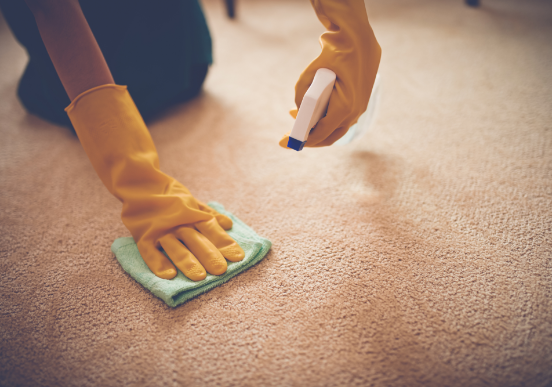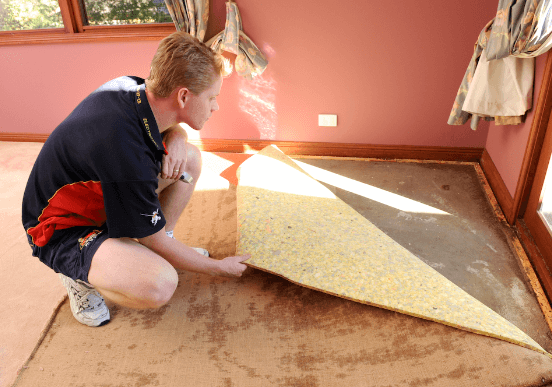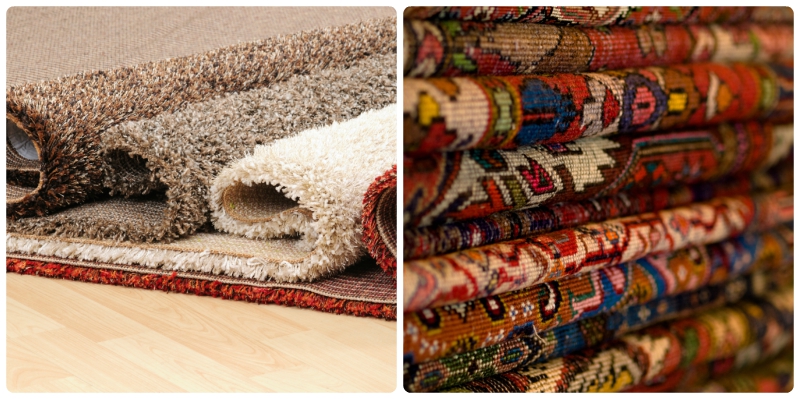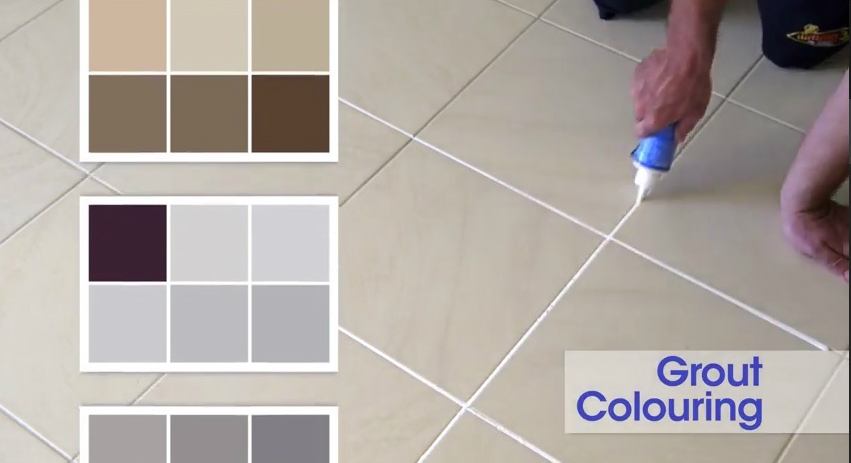When your beloved pet has an accident in the house, the liquid enters the carpet, then soaks down and spreads. The size of the spot you can see is generally a lot smaller than the size of the affected area in the backing of the carpet, the underlay and the floor. To make things worse, urine is a surfactant (breaks down surface tension), so each time the pet returns to that spot, the affected area beneath the carpet fibres gets bigger and bigger as the urine penetrates further and further.
So as much as we love our pets, the urine stains they can leave behind can cause a great deal of damage to your carpet. Hopefully, our pointers can help you.
What to do when an accident happens on the carpet

When your animal has an accident, it’s especially important to remove as much of the urine as possible. Removing as much of the liquid as you can gives you the best possible chance of success. The best way to do this is to put a thick absorbent towel (I recommend a beach towel folded over several times) on the area and apply downwards pressure. It’s generally best to stand on the towel to create as much downwards pressure as possible and enable the towel to wick-up the moisture, pulling it from below the carpet fibres.
Repeat this process using a fresh piece of towel until there’s no further transfer of moisture to the towel. It may take a little time and effort. If the pee has come from a big animal, such as a golden retriever (as I’ve experienced), then you’ll probably need 2 or 3 towels.
So what causes the urine smell?

When the urine dries it leaves bacteria and uric salts. The bacteria grows when there is moisture present (this is why we smell the urine most on humid or rainy days) and gives off an "off gas" which is the terrible urine smell that many pet owners know so well. In addition, the uric salts attract moisture and release their own unique off gas when moisture is present. That's why on a more humid day, you are more likely to smell that awful stench.
How do we remove the urine smell from carpet?

For one off accidents:
If the stain has partially or totally dried, then the best first step is to try to rehydrate the urine and extract it from the carpet. This is best done by mixing 2 cups of warm water and 1 cup of white vinegar and pouring it over the affected carpet.
Place a thick towel on the area, folded over several times, and stand on the towel. Use fresh towels and repeat the process until you can no longer detect the transfer of moisture to the towel. This step is only worth following if the animal has urinated in the area once or twice. If the pet has visited the area regularly then the urine is likely to penetrated into the underlay and subfloor.
Chances are that you’re not likely to remove 100% of the urine. We recommend using a product to kill any remaining bacteria. Electrodry Sells E-Pet by Restezy to kill the bacteria and neutralise the odour. It also contains active ingredients to deter the pet from returning to the same place, which is definitely an added bonus.

For multiple accidents:
If there has been repeated pet visits, then your ability to treat the problem with home remedies will be limited.
The Electrodry carpet cleaning process is to identify the extent of the damage using a penetrating meter that identifies the location of the uric salts in the carpet and underlay. If the carpet has suffered only moderate contamination, then the uric salts are likely to only exist in the carpet fibres and underlay. In this case we can inject a specialised disinfectant to kill the bacteria and neutralize the uric salts. We apply the same specialised disinfectant to the carpet fibres and rinse the carpet with a hot water extraction cleaning process. This has been a tried and true method for our team, and we have had many successful cleans using this method.
If the animal has repeatedly urinated in the same area, we may be best to pull back the carpet to visually inspect the underlay and sub-floor (usually concrete or floor boards). When there has been heavy contamination we may need to replace the underlay and apply a sealer to the sub-floor to seal off the urine contaminated structure and prevent future odours. The carpet fibres and backing also need to be cleaned and treated with a disinfectant and odour conteractant.
If you think your pet has only urinated once or twice in the area, then we suggest trying to re-hydrate the stain and waiting to see what results you achieve. You may have more chances of success this way.
NB: A moderate additional charge applies to disinfect the carpet backing and underlay through the injection of a specialised sanitising product and treat the stains (usually $30 per 15 minutes of treatment time). The work required to lift the carpet, replace the underlay and seal the sub-floor is quite extensive and attracts a charge of $300 to $500 per room.
Do you need professional help with your carpets? Our team is qualified at treating stains, including pet urine. Get professional advice from Electrodry. Call 13 33 79 or contact us online.
SUBSCRIBE TO OUR NEWSLETTER
Sign up for email promotions, tips and special offers.






